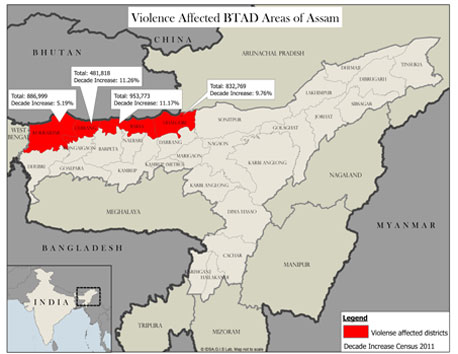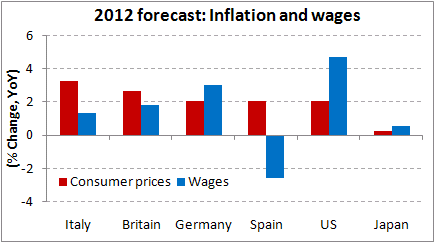NEW DELHI — Victims of the surprise attacks limp into
one of this city’s biggest public hospitals. Among the hundreds on a recent day
were children cornered in their homes, students ambushed on their way to class
and old men ambling back from work.
All told the same frightening story: stray dogs had
bitten them.
Deepak Kumar, 6, had an angry slash across his back
from a dog that charged into his family’s shack.
“We finally closed the gates to our colony and beat
the dog to death,” said Deepak’s father, Rajinder.
No country has as many stray dogs as
India,
and no country suffers as much from them. Free-roaming dogs number in the tens
of millions and bite millions of people annually, including vast numbers of
children. An estimated 20,000 people die every year from rabies infections —
more than a third of the global rabies toll.
Packs of strays lurk in public parks, guard alleyways
and street corners and howl nightly in neighborhoods and villages. Joggers carry
bamboo rods to beat them away, and bicyclists fill their pockets with stones to
throw at chasers. Walking a pet dog here can be akin to swimming with sharks.
A 2001 law forbade the killing of dogs, and the stray
population has increased so much that officials across the country have
expressed alarm.
In Mumbai, where more than 80,000 people reported
being bitten last year, the government plans to conduct a census of the strays
by using motorcycles to chase down dogs and squirt their fur with ink. A member
of the Punjab Legislative Assembly proposed in June sending strays to China —
where dogs are sometimes eaten — after more than 15,000 people in the state
reported being bitten last year. In New Delhi, officials recently announced an
intensified sterilization campaign.
India’s place as the global center for rabid dogs is
an ancient one: the first dog ever infected with rabies most likely was Indian,
said Dr. Charles Rupprecht, chief of the rabies program at the Centers for
Disease Control and Prevention in Atlanta. Dog bites cause 99 percent of human
rabies deaths.
Indeed, tackling rabies on the subcontinent is
challenging because the relationships that Indian dogs maintain with humans are
ancient. India’s pariah dog, the dominant street breed, is probably a descendant
of an early Chinese immigrant, said Peter Savolainen, a professor of
evolutionary genetics at the Royal Institute of Technology in Stockholm. With
pointed ears, a wedge-shaped head and a tail that curls over its back, the
pariah is similar in appearance to other prehistoric dogs like the Australian
dingo.
For thousands of years, dogs’ relationship with humans
was similar to that of pilot fish with sharks, said John Bradshaw, director of
the Anthrozoology Institute at the University of Bristol in Britain.
“Dogs essentially started out as scavengers,” Dr.
Bradshaw said. “They evolved to hang around people rather than to be useful to
them.”
While that relationship has largely disappeared in the
developed world, it remains the dominant one in India, where strays survive on
the ubiquitous mounds of garbage. Some are fed and collared by residents who
value them as guards and as companions, albeit distant ones. Hindus oppose the
killing of many kinds of animals.
Malini Jadeja, who lives in Delhi part time, said she
was walking her beloved dog Fudge Cake some years ago not far from Lodi Gardens
when “two dogs came out of nowhere and attacked.” Fudge Cake was leashed, so he
could not run away.
“I tried to grab the strays and pull them away, but
just as I got one, the other would attack,” Ms. Jadeja said. “They killed Fudge
Cake right in front of my eyes.”
She blames herself for her dog’s death and remains
terrified of strays. “It’s very difficult to take a dog for a walk here because
of the attacks from street dogs,” said Dr. Radhey S. Sharma, president of the
Indian Veterinary Association.
Nonetheless, India’s burgeoning middle class has begun
to adopt Western notions of pet ownership, buying pedigreed dogs and bringing
animals into their homes. But many pedigreed dogs end up on the street, the
castoffs of unsuccessful breeders or owners who tire of the experiment.
Enrico Fabian for The New York Times
Many of the animals are rabid, and India has more than a third
of the world’s deaths from rabies
Stray dogs are dangerous not only because of their
teeth but also because they help ticks and other parasites thrive. But animal
welfare advocates fervently reject euthanasia,
and some warn that reducing the stray population while doing nothing about the
country’s vast mounds of garbage could be dangerous because rats might thrive in
dogs’ place.
“The first thing you need to start doing to reduce the
stray population is manage your garbage better,” said Arpan Sharma, chief
executive of the Federation of Indian Animal Protection Organizations. “And the
second thing is very aggressive spaying, neutering and vaccinating of animals.”
Jaipur has reduced its stray population, but it is a
lonely exception that overcame not only enormous logistical and financial
challenges but cultural ones as well.
“People really don’t want us to take the street dogs
away, particularly in poor areas,” said Dr. Jack Reece, a Jaipur veterinarian
who helped lead the city’s effort. “In other areas, especially Muslim ones, they
won’t let us release the dogs back. I have been surrounded by large crowds,
angry young men, saying you can’t release the dogs here, even though they were
caught from there two days before.”
More than a dozen experts interviewed said that
India’s stray problem would only get worse until a canine contraceptive vaccine,
now in the lab, became widely and inexpensively available.
Dr. Rosario Menezes, a pediatrician from Goa, said
that India could not wait that long. Dogs must be taken off the streets even if
that means euthanizing them, he said. “I am for the right of people to walk the
streets without fear of being attacked by packs of dogs,” he said.
Arshpreet Kaur was 3 when a stray came in through her
home’s open front door and bit her and her grandfather. Within a week, Arshpreet
got a headache and then a fever. Her parents took her to a hospital, but she
soon slipped into a coma, in which she remained for nine years before finally
dying.
“There are stray dogs everywhere in Delhi,”
Arshpreet’s mother, Jasmeen Kaur, said in a telephone interview. “We are more
scared of dog bites than anything else.”
SOURCE: WWW.NYTIMES.COM














 While Morgan Stanley believes individual stocks are in a bull phase,
rate cuts, GDP growth revival are key
While Morgan Stanley believes individual stocks are in a bull phase,
rate cuts, GDP growth revival are key







